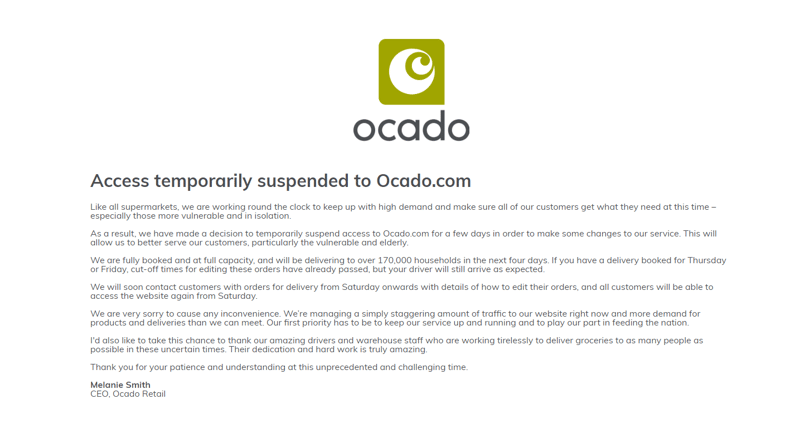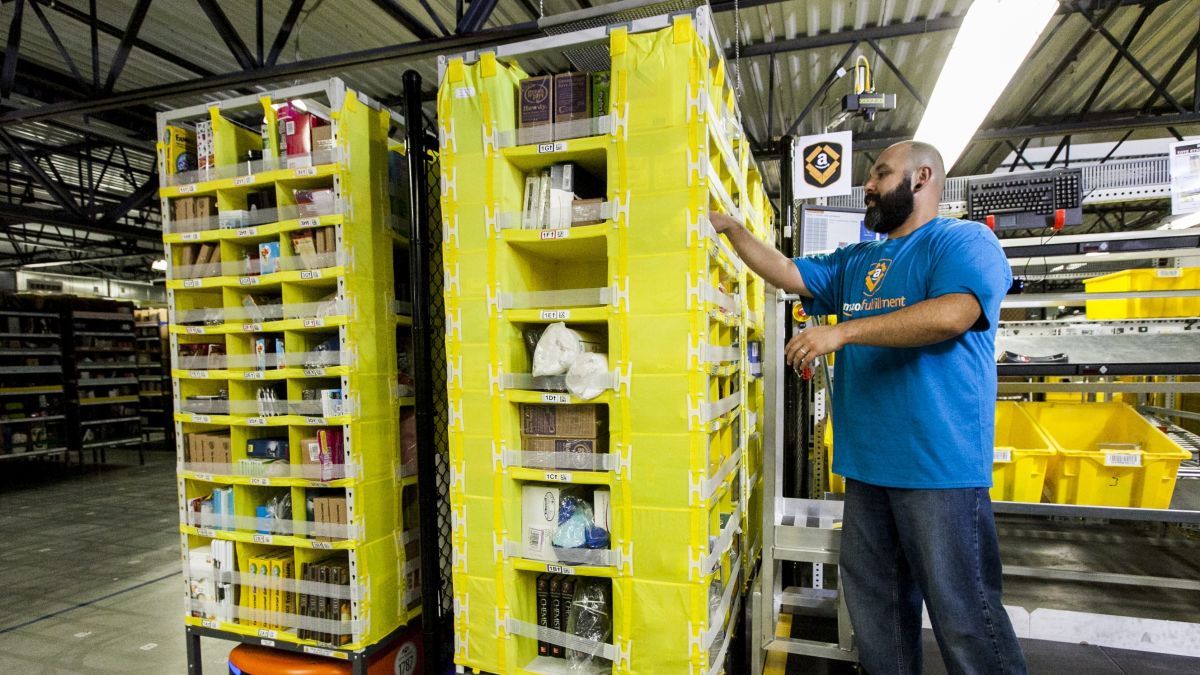The Grocery Spike : Hunger Game Around the World
Shift from offline to online
The coronavirus crisis has engendered unprecedented changes in the retail and e-commerce landscape. With the escalation of the pandemic and widespread concern for not having access to essentials like food and everyday household items, people are now rushing to supermarkets and grocery stores to stock up as they brace themselves for the worst.
However, as stringent social distancing measures are put into place and fears of infection set in, more consumers are compelled to stay at home. And some do not even have the option of going out due to quarantine orders. As the need for food and necessities persists, people are increasingly looking for alternative solutions such as delivery and buy online pick up at store (BOPIS) options.
.png?width=453&name=Ecommerce%20growth%20in%20coronavirus%20(1).png)
Inundation of demand for e-commerce retailers
The accelerated shift from offline to online implies a colossal surge in demand for online retailers. For instance, HKTVmall, one of the largest e-commerce companies in Hong Kong, has recorded a 169.3% increase in Gross Merchandise Volume (GMV) and a 165% increase in average daily order in Feb 2020, a substantial increase compared to the same period the previous year. Similarly, JD.com has reported that the sales of common household staples, e.g. rice and flour has increased fourfold in comparison to the same period last year.

This implies more pressure on e-commerce retailers as they grapple with dramatic spikes in sales and consequent supply chain disruptions. British online grocer, Ocado’s struggle to cope with the astronomical demand has led to a temporary shutdown of its website from March 18th to March 21st. The brand has also advised customers to place their orders early as delivery slots are filling up more quickly than usual.
Transforming challenges into opportunities for growth
While there is a lot of pressure on e-commerce retailers, this phenomenon undeniably presents them with new growth opportunities. Thus, it is of utmost importance that e-commerce retailers overcome hurdles like supply shocks to fully capitalize on the wide range of possibilities that are now being presented.

Amazon, on one hand, is hiring 100,000 workers on full-time & part-time positions across the U.S. in order to keep up with the online demand. But, as the number of workers increases, so does the risk of cross-infection. To tackle this, Amazon has adopted a Goods-to-Person picking system that utilizes robots so as to minimize workers’ mutual interaction and keep the spread of the virus at a minimum. This has also helped increase efficiency in the supply chain and ensure robust delivery to consumers.
Despite the overall influx in demand, Amazon is still committed to its promise of one-day shipping and other swift delivery services. This has significantly rendered them a strong competitive advantage which is likely to drive customer momentum, allowing them to maximize the growth potential.
The Aid of Picking System
The above-mentioned examples demonstrate the fundamental importance of a robust supply chain infrastructure when managing unprecedented changes in sales and demand. The picking system, for one, has proved to be an effective supply chain solution that many companies have adopted to increase efficiency.
HKTVmall managed to capitalize on the growth opportunity not only because of a rise in demand, but because of its capability to handle the sudden surge in demand. In their Goods-to-person system, picking robots played an irreplaceable role in enhancing the overall productivity and picking efficiency of the warehouse.
Grocery Cases In China
Walmart, the world’s largest retail chain, operates various hypermarket chains and discount stores and faced a series of challenges in its warehouses. As large volumes were going in and out it led to massive SKUs and high volatility. Moreover, Walmart was committed to its promise on same-day delivery and delivery accuracy of 99.99% but found both promises hard to fulfill due to the high error rates and labor costs associated with manual picking. To tackle this issue, Walmart worked with Geek+ to implement a pilot project in Walmart’s Shenzhen Distribution Centre. The picking robots of Geek+ were deployed and helped bring about a reduction in labor intensity, improved picking accuracy and an increase in picking efficiency by 3.5 times to that of prior levels.

Another example is the one of Yonghui Superstore, a Shanghai-listed company operating supermarket chains across China. The nature of the challenge that Yonghui Superstore faced was very similar to Walmart in terms of increasing volume demands, high labor costs and a significant rise of single item orders. Having adopted Geek+’s robotics solutions system, 43 P800 robots were deployed, and with a threefold increase in picking efficiency as well as an increased daily shipping processing capacity, Yonghui Superstore was able to meet the increased demand in the East China region. Moreover, it reduced on-site manual labor, allowing the company to gain cost-efficiency.

Geek+ offers a comprehensive robotic solution with a full picking system and business intelligence monitoring that improves the efficiency of in and outbound operations. By adopting our solutions and services, e-commerce retailers can effectively cope with surging demand and wholly capitalize on the growth opportunity.
If you want to learn more the automation trend, download our white paper now: 
About Geekplus
Geekplus is a global leader in mobile robotics technologies. We develop innovative robotics solutions for order fulfilment. More than 850 global industry leaders use our solutions to realize flexible, reliable, and highly efficient automation for warehouses and supply chain management.
Media Contact
Marie Peterson, VP International Marketing & Communications
Marie.peterson@geekplus.com
